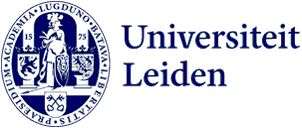Alumni event | Lezing
Van de Waallezing 2023: Maarten van Heemskerck, Rome and classical mythology
- Ilja Veldman
- Date
- Thursday 14 September 2023
- Time
- Address
-
Lipsius
Cleveringaplaats 1
2311 BD Leiden - Room
- 0.19, also as livestream
Livestream
If you are unable join us in the Lipsius-building, you can watch the livestream via the link below. The livestream will be available on September 14 from 18:00 onward.
Watch the livestreamThe annual Van de Waal Lecture takes place on 14 September, to mark the opening of the academic year of the department of Art History.
The lecture will take place in the Lipsius Building, room 0.19 and will also be available via livestream. The lecture takes place with the generous support of the RKD.
Please note that there will be no recording available.
This year's speaker is Ilja Veldman. Her lecture is titled: ''Maarten van Heemskerck, Rome and classical mythology'.
Stay informed
No Leiden Art History/Arts and Culture alumn but interested to stay informed about the annual Van de Waal Lecture? Please sign up for our yearly newsletter.
About the lecture
Maarten van Heemskerck (1498-1574) was one of the most important Dutch painters of the sixteenth century. Crucial to his work were the four or five years he spent in Rome. In more than two hundred sketches, he recorded what works of art could be seen in the ‘Eternal City’. He studied ancient sculpture in the papal sculpture garden of the Belvedere and other collections, he drew antique temples and ruins at the Forum and the Palatine, and he made sketches after mural paintings by Michelangelo and Rafael in the Sistine Chapel and the Vatican Palace. After returning to Haarlem, he was inundated with important commissions. He brought not only an entirely new style from Rome, but also a kind of subject matter that had never before been painted in the Low Countries before: stories from classical mythology. These were often piquant stories. Heemskerck was particularly fascinated by the myth of the adultery of Venus and Mars. In the Italy of his time, erotic representations were not a problem; such depictions were popular with the elite. But Heemskerck produced his paintings for the Dutch bourgeoisie. And so, like a true Dutchman, he adapted his mythological depictions to Christian standards and values.
In 2024, exactly 450 years after Heemskerck’s his death, three exhibitions will be dedicated to his work. The Frans Hals Museum in Haarlem shows early paintings in the context of predecessors and contemporaries. Stedelijk Museum Alkmaar focuses on Heemskerck's stay in Italy and the influence on his work. Teylers Museum in Haarlem presents a selection of the many prints for which he provided the design.
About the speaker
Ilja Veldman is a specialist on iconography and Dutch painting, prints and drawings from the fifteenth to the seventeenth century. She was a staff member at the University of Amsterdam from 1969 to 1984 and professor of art history at the Vrije Universiteit van Amsterdam until 2006. She wrote books and articles on Heemskerck, Coornhert, Goltzius, Crispijn de Passe and the meaning and function of Dutch prints. She often contributed to exhibitions at home and abroad. She is the guest curator of the 2024 Heemskerck exhibitions.

